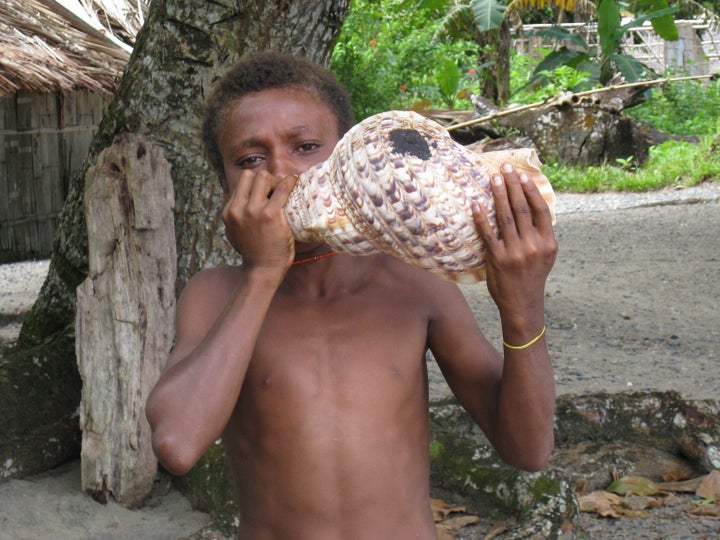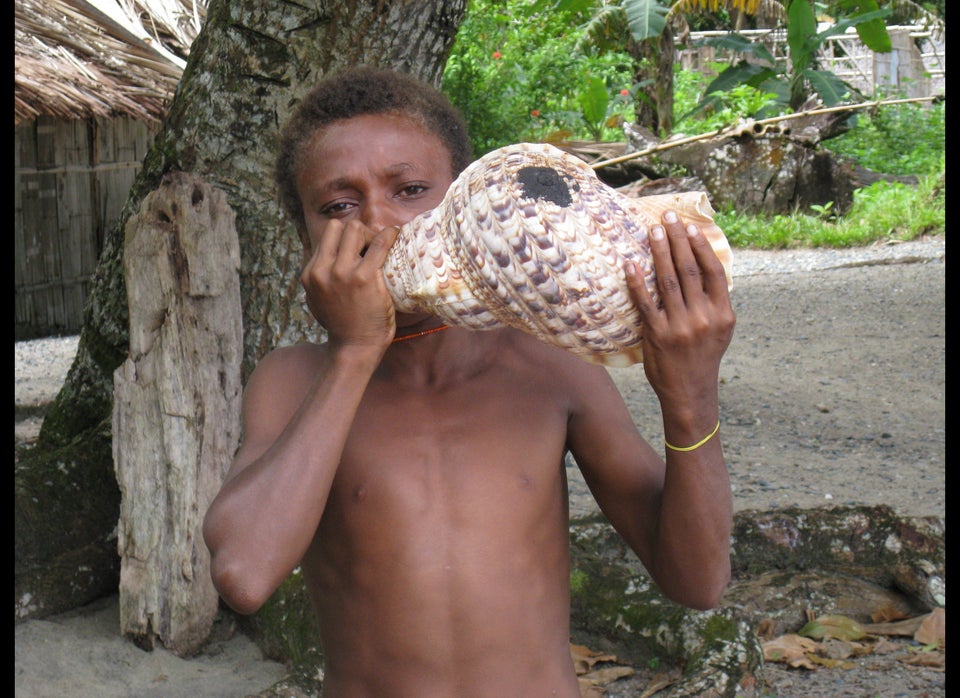
The following is an excerpt from 'Demon Fish: Travels Through the Hidden World of Sharks' by Juliet Eilperin.
In a world where most humans view sharks with a mix of fear and loathing, Papua New Guinea is one of the few places where people embrace them. For the villagers in Tembin, Mesi and Kontu -- the three towns that still practice shark calling -- sharks are an integral part of their creation story, a religious faith that has endured for centuries.
At this point many Papua New Guineans see shark calling as a divine right, one of the few skills they boast that no other civilization can offer. They argue that their ability to lure sharks from the deep -- and catch them by hand using snares -- represents a unique culture that should not be snuffed out by either colonization or modernization. Just because outsiders might not understand the practice, they say, doesn’t mean it lacks value. Henry Bilak, a retired soldier living in Mesi, says outsiders don’t fully appreciate what his people can do when it comes to connecting with sharks. “This is the oldest form of human communication with sharks,” he says, sitting in a village garden blooming with yellow, white, red and pink hibiscus. “The bottom line is this is what human beings can do. This is what God has given us.”
(Continue reading Shark Callers below photos)
Aeluda Toxok, a veteran shark caller in Mesi, took on the calling when he married a woman belonging to the Nako clan. Now in his late 60s, Toxok still goes out regularly in search of sharks. In a given season, he may go out to sea 30 times. Toxok was 30 when he first learned shark calling. By practicing the same rituals as those before him, he sees himself as a sort of shark tamer who calls upon his ancestors for aid in order to corral such a fierce predator. Even with his frizzy white hair and well-lined visage, Toxok is an impressive figure, lean and ready for battle.
One of the most striking aspects of shark callers is their supreme sense of confidence. When I happen on Toxok on the beach, he is preparing his canoe because he has an instinct that he is poised to catch a shark for the first time this season. “Because I have prepared myself, I can go out there and do it. I’ve got a feeling when the shark is coming. I’m going to catch it,” he says. “It’s like a game, because I have prepared all the rituals. I have caught sharks, and I know every time I will go out, I will catch a shark.”
Toxok’s surety is particularly impressive given that once he lures a shark to his outrigger canoe, he must subdue the fish by hand. Shark calling is practiced in three sets of islands along the Bismarck Archipelago -- New Ireland, the Duke of York and the Tabar islands -- and in each case they use a contraption to catch sharks that is used nowhere else. To trap a shark, the caller submerges a noose made of plaited cane, which is attached to a wooden propeller float. When the shark is through the noose up to its pectoral fins, the fisherman jerks up on the propeller’s handle, which in turn tightens the noose around the shark. At this point, the shark struggles to break free, and the shark caller must resist the animal’s force to keep it from escaping. Once the shark is exhausted, the fisherman can relax for a few moments and let the float bring it to the surface. At this point the caller stabs the shark in the eyes, to debilitate it further, clubs it into submission and brings it aboard his canoe.
While sharks represent the terrifying unknown to most of us, shark callers believe they can sense the sharks at all times. And that form of “seeing,” even if it’s not literal, erases the fear that dominates our view of them.
This is an excerpt from 'Demon Fish: Travels Through the Hidden World of Sharks' by Juliet Eilperin.
